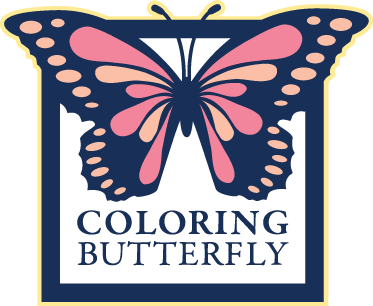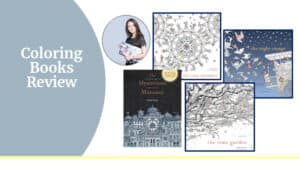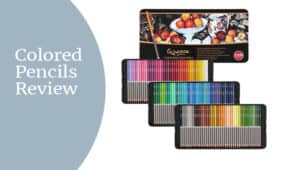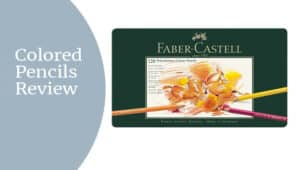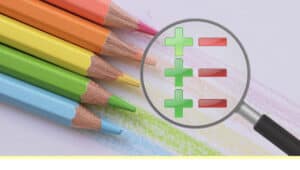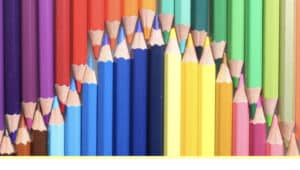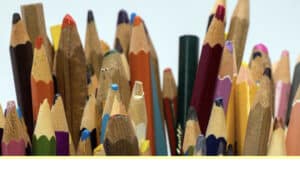Table of Contents
Toggle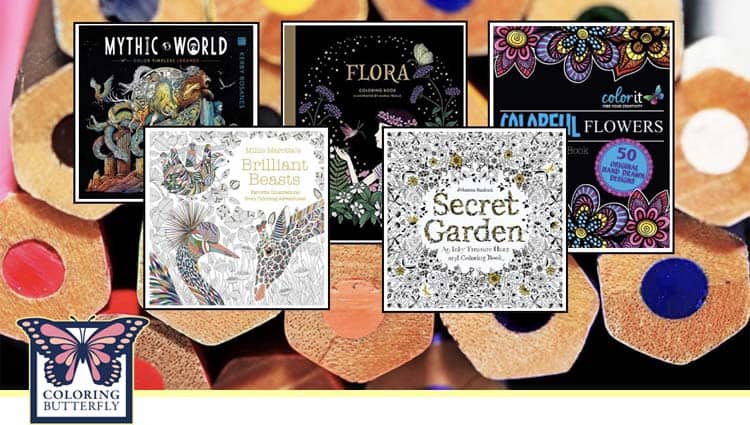
Adult coloring book paper: What you need to know. It matters.
You have carefully and excitedly chosen your first set or maybe your fifth set of coloring pencils. Each set of pencils comes with its unique set of properties. The pencils can perform differently on various types and grades of paper, making all the difference in your coloring experience.
Paper Makes A difference in Coloring Books
Table of Contents
- Author’s “Aha Moment” with Coloring Book Paper
- How Coloring Paper Affect Coloring Books
- Types of Coloring Book Paper
- Choosing to Purchase Books
Other resources. Check out other supporting resources on ColoringButterfly.com that you might enjoy.
- Buying A Coloring Book: Everything You Need to Know (Guide)
- Art & Coloring Paper Specs: Know the Meaning (Before You Buy)
- Want Colored Pencil Paper? 13 Top Choices for Adult Coloring
- Which Coloring Books have Poor-Quality Paper? (2 Tips for Amazon)
- How to Find the Best Colored Pencil Paper for Coloring (Guide)
- Buying Colored Pencils? Everything You Need Know (Guide)
Paper is the first introduction to a coloring book. How you’re your colored pencil responds and colors makes a difference in whether you continue to color in the book, order more of the coloring book series, or choose a brand or artist. There are coloring book artists that I love, but I wouldn’t say I like the paper in all their coloring books. I want to be proud of my work and enjoy the experience when I color. Paper can make a difference. Allow me to share a personal story about my early coloring book paper experiences.
- Important Note: If you are short on time. Read the sections “How Coloring Book Paper Influences Your Decision” and “Amazon Coloring Books: Important Google Search Strategy.” [TOC]
Author’s “Aha Moment” with Coloring Book Paper
Coloring book paper is a topic I never really thought about when I started coloring, and I focused on the themes and artwork/illustrations that interested me. As I colored with my set of Prismacolor Premier colored pencils, I noticed peculiarities from coloring books to coloring books. I used the same coloring techniques but noticed a difference in color vibrance, layering and blending, and color application.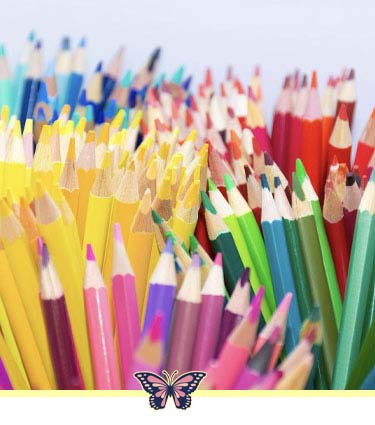
For example, I used the same colored pencils in two different coloring books. The colors and responsiveness were quite noticeable. The pencils did not deliver many colors in one coloring book and were muted. This paper was smooth with a tiny texture/tooth. The characteristics of the paper did not retain the color of my pencil, and I had to work noticeably harder to lay down the color.
I reached out to the coloring community and asked, “why am I experiencing such a difference in the performance of my colored pencils?”, “What am I doing wrong?” My answer was somewhat surprising, “It’s the coloring book paper.” I thought, what does the paper have to do with it? The simple revelation began a journey of discovery of learning the paper quality in coloring books, paper characteristics, and what paper is best for colored pencils, markers, gel pens, and more.
That knowledge intrigued and inspired my search to understand the personality and characteristics of Paper and colored pencils. As part of that exploration, I evaluated my coloring experiences in different coloring books using my Prismacolor Premier colored pencils. Using the same pencils, I researched and used different types of paper for the coloring I did on single illustrations/drawings I printed from my Laser and Inkjet printers. [TOC]
How Coloring Paper Affect Coloring Books
How does coloring paper affect colored pencils? In the coloring experience, we spend a lot of time choosing our colored pencils, learning coloring techniques, improving our coloring skills, and then deciding which coloring books we want to spend our time with.
How often have you thought about the paper in the coloring book? Paper is an essential factor in deciding the coloring experience’s outcome. For example, if you use Prismacolor Premier, a waxed-base colored pencil on paper that does not accept wax-based cores very well, the color can be muted. You will lose Prismacolor Premier’s unique color characteristics. [TOC]
What Paper is Used in Coloring Books
What Type of Paper is Used in Coloring Books? All coloring books are not the same when it comes to paper. For most adult coloring enthusiasts, paper is an often-overlooked coloring book feature. The paper defines the type of coloring application and technique you can use within the coloring book. The paper tends to be standard for many coloring books, while other book publishers will spend months searching for the perfect paper that includes color, thickness, and paper stock/texture. I would like to divide this section into three parts: Definitions to Remember. [TOC]
The Quality of the Paper has A Certain Feel
Paper quality is often the first time someone comes into contact with your brand, product, service, or event. It’s essential to consider paper weight regarding design, purpose and perceived value.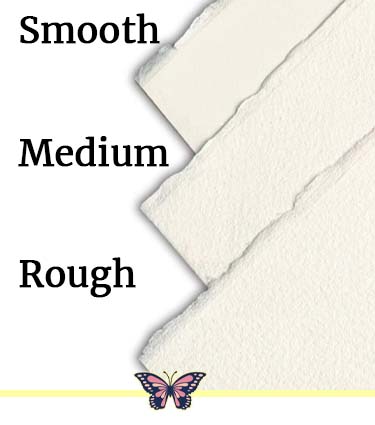
The following is my experience with grades of coloring book paper. Paper weight is abbreviated as lb in North America and gsm in Europe. The higher the paper weight, the thicker/heavier the paper. Paper weight has a direct effect on opacity. Opacity refers to the “show through” how much of what is printed on the back of the paper you can see.
Paper weight also affects how thick the book will be or the pages in a book; for example, lower-weight coloring books will have more pages/more drawings to color. A higher-weight paper will mean fewer pages/fewer drawings to color. The higher the weight, the more costly the coloring book.
When it comes to colored pencils, you can use them on any weight paper. If you are using solvents for blending or combining colored pencils with other media (e.g., watercolor pencils, markers, gel pens and more), you will need heavier paper, which will not buckle/warp.[TOC]
Coloring Book Paper Weights
Text (paper used on pages) 70lb/100gsm to 80lb/120gsm paper is lightweight and budget-friendly. When this paper is used, it helps lower the cost of the coloring book. One of the characteristics of this paper is that when you have double-sided printing, you can see the image of the other side. The paper feels light and flimsy and has an almost cheap feel. A lot of self-published/independent-published coloring books are in this range. For example, you will see weights like:
- 60 lb /90 gsm
- 70 lb /100 gsm
- 80 lb /120 gsm
Text (paper used on pages) 100lb/150gsm and above the paper weight range means that you will not have any see-through, meaning that when you have double-sided printing, you will not see the line art/drawing on the other side of the page. The paper feels unique and richer to the touch. For example, higher-end coloring books will have paper weights like:
- 100 lb /150 gsm
- 120 lb /180 gsm
- 135 lb /200 gsm
Cover 80-130lb paper is thicker and is used in most coloring book covers. The lower weight of the cover allows you to easily bend cover, while the heavier weight is more rigid. [TOC]
Watercolor Paper Weights
The heavier the paper, the heavier it weighs, and the more water it will take before it begins to buckle. The standard weights for watercolor paper are 90, 140, and 300lb
- 90lb watercolor paper will accept a fair amount of water but is less than most watercolorist uses.
- 140lb watercolor paper is the most common paper used by watercolor artists/painters. It is noticeably thicker, handles much more water, and has a mid-range price tag.
- 300lb is the strongest and heaviest paper you will ever need in adult coloring. The paper feels like cardstock and is more ridged, and this paper will dry when it is flat with no buckling. Expect a higher price. [TOC]
Types of Coloring Book Paper
The grade of paper in coloring books can range from photocopies to artists’ paper. Each grade of paper has a surface texture that has unique qualities and responds differently to coloring media (e.g., colored pencils, watercolor, gel pens, markers) and technique/style. The thicker the paper, the less likely it is that inks will bleed onto the adjacent pages.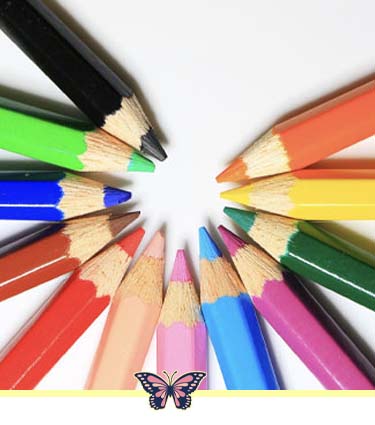
The following are examples of the papers used in coloring books.
- Amazon KDP Paper. Many of the coloring books on Amazon come from Amazon KDP. KDP is a service that helps new authors, artists, and illustrators self-publish coloring books. I have found some incredible artists who publish on Amazon KDP paper. The paper used in KDP paper is not very good; it can be very frustrating for coloring.
- Joanna Basford coloring books (e.g., Lost Ocean, Magical Jungle, World of Flowers) use a medium texture paper that gives you enough tooth (peaks and valleys) to layer your coloring pencils. Her artist editions (e.g., Enchanted Forest, Lost Ocean, Secret Garden) use heavier paper whose texture has enough tooth so you can layer, burnish, and blend colored pencils easily. The color of the paper used in Joanna’s coloring books is ivory and white. The ivory, for example, allows light coloring layers without mudding the color palette and does not change the color pigment when applied. The paper can have different properties depending on where the books are published.
- ColorIt coloring books feature hardback covers, double spiral bindings, thick acid-free artist-quality paper, and a bonus blotter to be works of art. [TOC]
Choosing to Purchase Books
These are a few of my favorite ways of finding coloring books with better paper and transferring the coloring page line art/drawing to a better paper.
Before I purchase coloring books, I will read reviews and comments on Amazon and look at flip-throughs on YouTube. As I have mentioned, coloring books come with all types of paper. Some favorite artists are Johanna Basford, Hanna Karlson, Maria Trolle and Millie Marotta. The paper in their coloring books is excellent. For a while, I just wanted to purchase coloring books with quality paper.
Is printing a color book with poor-quality paper a bad thing? In my coloring journey, I found many authors/illustrators whose illustrations and coloring books were excellent. Many of their books were created on Amazon KDP with marginal paper. These artists may be new or seasoned, but self-publishing is the best option for getting their work into the coloring community. So do I focus on a paper or purchase the excellent coloring books on marginal paper? Yes and no. Today is a no-brainer; I purchase the coloring books with the artwork/line art I want to color.
What do you do when you find coloring books with poor paper? I will choose between three options:
- I will purchase the coloring book and coloring in the book.
- I will purchase the book and remove the pages I want to color and print them on Bristol Vellum surface paper and other quality papers in my Laser or Inkjet printer.
- I will not purchase the coloring book. [TOC]
If you liked this article, please share it with friends.
